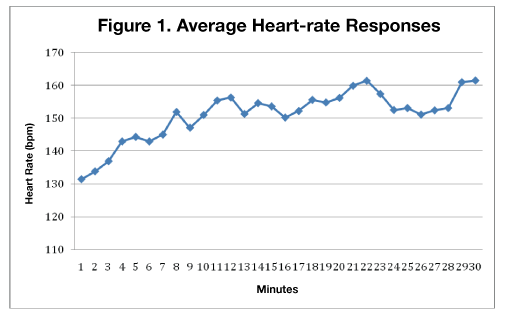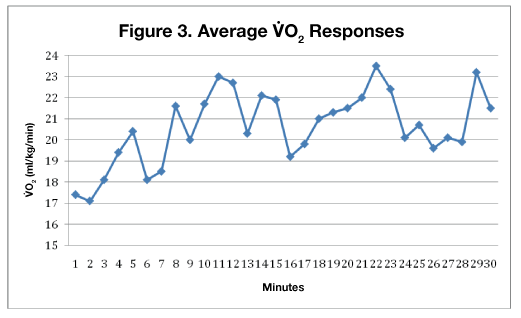
BY JORDAN HOLTHUSEN, M.S., JOHN PORCARI, PH.D., CARL FOSTER, PH.D., AND SCOTT DOBERSTEIN, M.S., WITH MARK ANDERS
First Lady Michelle Obama does it. So does pop superstar Beyonce. Same goes for actress Marissa Tomei and even basketball icon Shaquille O’Neill. We’re talking about hooping, the modern evolution of the hula hoop.
While most people think of the hula hoop as a children’s toy that was all the rage back in the 1950s, the history of hula hooping dates back thousands of years to Egypt and ancient Greece when hoops fashioned from grapevines were actually used for exercise.
Modern hooping started primarily as a form of dance expression using larger, weighted hula hoops, but in recent years it has found its way back into the fitness world. Trendy gyms like Crunch and Equinox have incorporated hooping into Pilates and yoga classes, while hooping-specific classes and fitness studios are also blossoming around the country. These hooping classes generally incorporate a wide variety of hooping choreography and dance music into a fun and fast-paced group workout. Hoopers are now using hoops that are 37 to 45 inches in diameter and weigh 1 to 4 pounds. These larger, heavier hoops rotate around the body more slowly, making it easier to hoop while potentially burning more calories and eliciting improved fitness benefits.
Although hooping has become something of a fitness craze and proponents promote the activity as a full-body workout capable of burning up to 600 calories per hour, “there has been no scientific literature to support the fitness benefits of hooping,” says Jordan Holthusen, M.S., an exercise researcher with the University of Wisconsin, La Crosse.
So in an effort to cut through all the hoopla and buzz about hooping, the American Council on Exercise enlisted Holthusen and her colleagues to study the activity’s potential cardio and calorie-burning benefits.
The Study
To gauge the exercise intensity and calorie-burning potential of hula-hooping workouts, a team from the Exercise and Health Program at the University of Wisconsin, La Crosse, led by Holthusen and John Porcari, Ph.D., recruited 16 female volunteers between the ages of 16 and 59, all of whom were intermediate- to advanced-level hoopers.
Prior to actual testing, each participant was allowed to do two practice sessions using a 35-minute hooping workout video developed by Mary Pulak, founder of Hooked on Hooping, a group hooping exercise studio based in Green Bay, Wisc. The video featured a five-minute warm-up followed by a 30-minute hooping workout including seven different dances and a wide variety of choreography.
Once they were comfortable with the workout, each participant donned a portable oxygen analyzer and a Polar heart-rate monitor while they hooped along to the exercise video at their own pace using a weighted hoop. Researchers recorded heart rate (HR) and oxygen consumption (VO2) at one-minute intervals during the 30-minute workout. Participants were also surveyed every five minutes on their individual ratings of perceived exertion (RPE) based on the Borg Scale.
The Results
Following testing, the researchers sliced and diced the data, determining that hooping burns an average of seven calories per minute for a total of about 210 calories during a 30-minute hooping workout. As for heart-rate data, the average HR was 151 bpm (beats per minute), which works out to approximately 84 percent of the age-predicted HRmax for the average subject (Figures 1 and 2). Meanwhile the oxygen consumption (VO2) average was about 20.6 ml/kg/ per minute (Figure 3). Finally, the RPE average for the workout was rated by participants as “somewhat hard” on the Borg Scale.



“Hooping compares pretty favorably with most other group classes, in terms of heart rate and calorie burn,” says Porcari. In fact, exercisers can expect similar results from hooping as they’d get from boot-camp classes, step aerobics and cardio kickboxing—all of which meet fitness industry criteria for improving cardiovascular fitness (Table 1). Also, by burning approximately 210 calories per 30-minute session, hooping falls within accepted guidelines for exercise that can contribute to weight management.
|
Table 1. Comparative Free Range Exercise Studies
|
| Study |
% HRmax |
VO2 (ml/kg/min) |
Kcal/min |
| Hooping |
84 ± 9.0 |
20.6 ± 3.31 |
7.0 ± 1.44 |
| Boot Camp |
81 ± 14.3 |
25.9 ± 4.24 |
7.5 ± 1.92 |
| Nia Technique |
57 ± 7.3 |
10.5 ± 1.60 |
3.2 ± 0.50 |
| Advanced Pilates |
62 ± 4.0 |
17.3 ± 1.40 |
5.5 ± 0.97 |
| Power Yoga |
62 ± 5.4 |
18.7 ± 1.30 |
5.9 ± 1.03 |
| Curves |
75 ± 6.9 |
17.0 ± 3.50 |
6.4 ± 0.79 |
| Cardio Kickboxing |
86 ± 0.0 |
25.7 ± 2.65 |
8.1 ± 1.24 |
| Step Aerobics |
75 ± 4.7 |
23.4 ± 2.10 |
5.9 ± 0.86 |
The Bottom Line
Hooping is an excellent form of exercise.
“Before we did the study, I didn’t imagine the heart-rate averages would be so high,” says Holthusen. “I was really impressed by how intense of a workout you can get hooping and how many calories you can burn.”
In addition to the hard data the researchers uncovered, Porcari suggests that given the variety of movements in hooping it should be considered a total-body workout that has the potential to improve your flexibility and balance while strengthening and toning the muscles of the back, abdomen, arms and legs. The rhythmic nature of hooping may also be relaxing and almost meditative for some.
Although researchers note that a proper training study needs to be done to substantiate hooping’s potential long-term fitness benefits, Holthusen says one thing is certain:
“Hooping is fun.”
This study was funded solely by the American Council on Exercise.
___________________________________________________________________________

MARK ANDERS is an award-winning journalist who has covered a wide range of topics from rock star profiles to surfing river waves in Africa. His work has been published in more than 20 different magazines and books.